|
Books Should Be Free Loyal Books Free Public Domain Audiobooks & eBook Downloads |
|
|
Books Should Be Free Loyal Books Free Public Domain Audiobooks & eBook Downloads |
|
Religion |
|---|
|
Book type:
Sort by:
View by:
|
By: Sophie May (1833-1906) | |
|---|---|
 Aunt Madge's Story
Aunt Madge's Story
| |
 The Twin Cousins
The Twin Cousins
| |
 Little Grandmother
Little Grandmother
| |
 Little Grandfather
Little Grandfather
| |
By: Soren Kierkegaard (1813-1855) | |
|---|---|
 Fear and Trembling (selections)
Fear and Trembling (selections)
"And God tempted Abraham and said unto him: take Isaac, thine only son, whom thou lovest and go to the land Moriah and sacrifice him there on a mountain which I shall show thee. Genesis 22:1" Soren Kierkegaard wondered how Abraham made the movement of faith that made him the father of faith mentioned in the New Testament . Fear and Trembling is the product of his wonder. Work out your salvation in fear and trembling . One-third of "Fear and Trembling" was translated in 1923 by Lee Hollander in the University of Texas Bulliten. This book has already been read in parts in the Short Nonfiction Collection but I think some might be interested in listening to it as a complete reading. | |
By: Soyen Shaku (1860-1919) | |
|---|---|
 Sermons of a Buddhist Abbot
Sermons of a Buddhist Abbot
Look! it's the science of sitting, No! it's the science of meditating, No! it's Zen. If you wanted to know anything regarding Zen Buddhism and you did not have the opportunity then here is your chance to listen to the wisdom of a Zen Buddhist Abbot who toured the United States in 1905-6 and most of the sections in this book were lectures that were given to the American Audience, which is why this work is nicknamed as "Zen for Americans.""The Zen that can be explained is not the Zen" said the second patriarch to Bodhi Dharma but this book tries to explain the basic principles that can help you get started on the journey of experiencing Zen... | |
By: St. Benedict of Nursia (ca. 480-547) | |
|---|---|
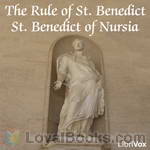 The Rule of St. Benedict
The Rule of St. Benedict
The Rule of Saint Benedict (Regula Benedicti) is a book of precepts written by St. Benedict of Nursia for monks living communally under the authority of an abbot. Since about the 7th century it has also been adopted by communities of women. During the 1500 years of its existence, it has become the leading guide in Western Christianity for monastic living in community. The spirit of St Benedict's Rule is summed up in the motto of the Benedictine Confederation: pax ("peace") and the traditional ora et labora ("pray and work").(Introduction from Wikipedia) | |
By: St. Catherine of Genoa (1447-1510) | |
|---|---|
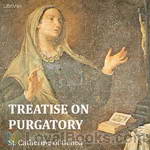 Treatise on Purgatory
Treatise on Purgatory
Saint Catherine of Genoa (Caterina Fieschi Adorno, born Genoa 1447 – 15 September 1510) is an Italian Roman Catholic saint and mystic, admired for her work among the sick and the poor. She was a member of the noble Fieschi family, and spent most of her life and her means serving the sick, especially during the plague which ravaged Genoa in 1497 and 1501. She died in that city in 1510.In 1551, 41 years after her death, a book about her life and teaching was published, entitled Libro de la vita mirabile et dottrina santa de la Beata Caterinetta de Genoa... | |
By: St. Ignatius Loyola (1491-1553) | |
|---|---|
 The Autobiography of St. Ignatius
The Autobiography of St. Ignatius
This account of the life of St. Ignatius, dictated by himself to Father Gonzalez, is a most valuable record of the great Founder of the Society of Jesus. It, more than any other work, gives an insight into the spiritual life of St. Ignatius. Few works in ascetical literature, except the writings of St. Teresa and St. Augustine, impart such a knowledge of the soul.The saint in his narrative always refers to himself in the third person, and this mode of speech has here been retained. Many persons who have neither the time, nor, perhaps, the inclination, to read larger works, will read, we trust, with pleasure and profit this autobiography... | |
 Spiritual Exercises
Spiritual Exercises
These are the Spiritual Exercises of St. Ignatius of Loyola, a plan of contemplation to be carried out over about a month. St. Ignatius of Loyola (1419-1556) was the founder of the Jesuits, and was canonized by Pope Gregory XV in 1622. He published the Spiritual Exercises in 1548. The Exercises were intended for use by someone who would be conducting a retreat and are a series of notes on methods and things to cover. As such they read more like a manual and overview than a devotional book that one can look to for edification... | |
By: St. Ignatius of Antioch | |
|---|---|
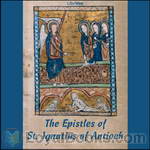 The Epistles of Ignatius
The Epistles of Ignatius
Ignatius of Antioch penned these letters to churches (Ephesians, Magnesians, Trallians, Romans, Philadelphians, and Smyrnaeans) and Polycarp on his way to martyrdom. Ignatius was an apologist for the Episcopal style of church government (as opposed to sole rule by a council of presbyters) which developed in the late first or early second century. Eager to die in imitation of his Savior, it was Ignatius who wrote this to the Roman church: “I am God’s wheat, and I am ground by the teeth of wild beasts that I may be found pure bread [of Christ].” | |
By: St. John Chrysostom (349-407) | |
|---|---|
 Commentary on Galatians
Commentary on Galatians
St. Chrysostom’s Commentary on the Epistle to the Galatians is continuous, according to chapter and verse, instead of being arranged in Homilies, with a moral or practical application at their close, as in his exposition of other Epistles. It was written in Antioch, as Montfaucon infers from a reference which the Author, makes upon Chap. i., ver. 16 to other of his writings, which certainly were written about the same time in that city. (Introduction from the preface by John Henry Newman) | |
 Birth, Baptism, Temptation, and Early Ministry of Jesus Christ - Commentary on the Gospel of St Matthew
Birth, Baptism, Temptation, and Early Ministry of Jesus Christ - Commentary on the Gospel of St Matthew
Homilies 1 - 14 of Saint John Chrysostom's commentary on the Gospel according to Saint Matthew, which include the wonderous birth, baptism, temptation, and early ministry of the Lord Jesus Christ. | |
 Parables of the Lord Jesus Christ - Commentary on the Gospel of St Matthew
Parables of the Lord Jesus Christ - Commentary on the Gospel of St Matthew
Homilies 44 though 64 of St John Chrysostom's commentary on the Holy Gospel according to St Matthew, which include the parables and teachings of the Lord Jesus Christ. | |
 Sermon on the Mount - Commentary
Sermon on the Mount - Commentary
Saint John Chrysostom's Homilies 15-25, on the Gospel of Saint Matthew, expound upon Matthew Chapters 5-7, known as The Sermon on the Mount, containing perhaps the most well-known teachings of the Lord Jesus Christ. | |
 Miracles of the Lord Jesus Christ - Commentary on the Gospel of St Matthew
Miracles of the Lord Jesus Christ - Commentary on the Gospel of St Matthew
Homilies 25 though 43 of St John Chrysostom's commentary of the Holy Gospel according to St Matthew, which include the miracles and teachings of the Lord Jesus Christ. | |
 Death and Resurrection of the Lord Jesus Christ - Commentary on the Gospel of St Matthew
Death and Resurrection of the Lord Jesus Christ - Commentary on the Gospel of St Matthew
Homilies 65 though 90 of St John Chrysostom's commentary on the Holy Gospel according to St Matthew, which include the death and resurrection of the Lord Jesus Christ. - Summary by The Reader | |
 St. John Chrysostom on the Epistle of Titus
St. John Chrysostom on the Epistle of Titus
John Chrysostom was the Archbishop of Constantinople and perhaps one of the most famous preachers of the Eastern world. He would come to be known as Chrysostom which means means "golden-mouthed" in Greek. In this series of sermons he expounds upon St. Paul's letter to Titus. | |
 St. John Chrysostom on 1 Timothy
St. John Chrysostom on 1 Timothy
Timothy was one of the disciples of the Apostle Paul, who had a deep affection for him, writing, "You know the proof of him, that as a son with a father, he has served with me in the Gospel." Philippians 2:22 Also to the Corinthians he writes: "I have sent unto you Timothy, who is my beloved son, and faithful in the Lord. In this set of homilies St. John Chrysostom , the Archbishop of Constantinople and one of the most famous preachers of the Eastern world, expounds upon Paul's first letter to Timothy. | |
 Three Homilies on the Devil
Three Homilies on the Devil
John Chrysostom, Archbishop of Constantinople, delivered these three homilies, most likely at Antioch, about the role of demons in our life. The summary for each one follows: 1) Against those who say that demons govern human affairs, and who are displeased at the chastisement of God, and are offended at the prosperity of the wicked and the hardships of the just. 2) Against those who object because the devil has not been put out of the world: and to prove that his wickedness does no harm to us—if we take heed: and concerning repentance... | |
 St. John Chrysostom on 2 Timothy
St. John Chrysostom on 2 Timothy
St. John Chrysostom , the most famous preacher of his age turned his attention to 2 Timothy, giving a total of 10 sermons this letter by Paul to his beloved Timothy who he had appointed as an arch-bishop. This epistles is one of three that are called "pastoral" because they concern the conduct of church leaders. It is considered to be one of the last letters he wrote before his death in Rome. Summary by ancientchristian. | |
 Homilies on Ephesians
Homilies on Ephesians
From The Argument: “Ephesus is the metropolis of Asia. It was dedicated to Diana, whom especially they worshipped there as their great goddess. Indeed so great was the superstition of her worshippers, that when her temple was burnt, they would not so much as divulge the name of the man who burnt it. The blessed John the Evangelist spent the chief part of his time there: he was there when he was banished and there he died. It was there too that Paul left Timothy, as he says in writing to him, “As I exhorted thee to tarry at Ephesus... | |
 Homilies on Philippians
Homilies on Philippians
The Epistle to the Philippians, is a letter written by St. Paul the Apostle and Timothy to the clergy of Philippi. It is included in the New Testament of the Bible. Philippi is a city in Macedonia, a city that is a colony, as Luke says. It there that a seller of purple was converted, a woman of uncommon piety and heedfulness. There also the ruler of the synagogue believed, and Paul was scourged with Silas. This commentary is composed of a serious of homilies delivered by St. John Chrysostom, the golden-mouthed preacher of Constantinople. - Summary by ancientchristian | |
 Homilies on Colossians
Homilies on Colossians
"Holy indeed are all the Epistles of Paul: but some advantage have those which he sent after he was in bonds: those, for instance, to the Ephesians and Philemon: that to Timothy, that to the Philippians, and the one before us: for this also was sent when he was a prisoner,… "But why do I say that these Epistles have some advantage over the rest in this respect, because he writes while in bonds? As if a champion were to write in the midst of carnage and victory; so also in truth did he. For himself too was aware that this was a great thing, for writing to Philemon he saith, “Whom I have begotten in my bonds... | |
 St. John Chrysostom on First Corinthians, Volume 1
St. John Chrysostom on First Corinthians, Volume 1
The First Epistle to the Corinthians is attributed to St. Paul the Apostle and a co-author named Sosthenes, and is addressed to the materially wealthy Christian church in Corinth. The letter can be divided as follows: 1) Thanksgiving 2) Division in Corinth 3) Immorality in Corinth 4) Difficulties in Corinth 5) The Doctrine of the Resurrection 6) Closing Remarks . In general, the letter is rich in instruction and covers many relevant issues for Christians today. This collection of St. John Chrysostom homilies on the letter gives us a chance to hear one of the greatest minds of the early church expound on its contents. - Summary by ancientchristian | |
 Homilies on Hebrews
Homilies on Hebrews
Let us then stretch our mind towards Heaven, let us be held fast by that desire, let us clothe ourselves with spiritual fire, let us gird ourselves with its flame. No man who bears flame fears those who meet him; be it wild beast, be it man, be it snares innumerable, so long as he is armed with fire, all things stand out of his way, all things retire. The flame is intolerable, the fire cannot be endured, it consumes all. With this fire let us clothe ourselves, offering up glory to our Lord Jesus Christ, with whom to the Father, together with the Holy Ghost, be glory, might, honor, now and ever and world without end. Amen. Thanks be to God. | |
By: St. Robert Bellarmine (1542-1621) | |
|---|---|
 Art of Dying Well
Art of Dying Well
The Art of Dying Well is a guide book for people who want to go to heaven. It was written over 400 years ago by Saint Robert Bellarmine in latin and translated into English in the mid 1800's by Rev John Dalton, an English priest. Death is inevitable, this book will show you how to reach Heaven. | |
By: St. Teresa of Avila (1515-1582) | |
|---|---|
 The Interior Castle
The Interior Castle
El Castillo Interior or Las Moradas (trans.:The Interior Castle or The Mansions) was written by Saint Teresa of Ávila in 1577. After being ordered to write her autobiographical La Vida de la Santa Madre Teresa de Jesús (The Life of S. Teresa of Jesus), Teresa was hesitant to begin writing again on her views of the perfection found in internal prayer. In the hands of the Inquisition at that time, her Life was commonly believed to be the weight in the scale of whether to call her experiences heretical or not... | |
 Book of the Foundations
Book of the Foundations
Essentially the sequel to The Life of St. Teresa, Teresa recounts the foundations of the Discalced Carmelite monasteries in Spain, both for men and women. This book tells of all the triumphs and troubles, and about the many people who helped her.(Introduction by Ann Boulais) | |
By: St. Victorinus of Pettau | |
|---|---|
 Commentary on the Apocalypse of the Blessed John
Commentary on the Apocalypse of the Blessed John
This commentary is said to have been composed around 260, making it the earliest surviving commentary on Revelation. The author, St. Victorinus of Pettau flourished about 270, and was martyred during the Roman persecutions under Emperor Diocletian. The commentary does not cover every verse but focuses instead on key passages, giving mostly allegorical interpretations. He saw the Apocalypse as consisting of various subdivisions which run parallel with each other, the main theme of which is the coming Second Advent. - Summary by ancientchristian | |
By: Stephen Morrell Griswold (1835-1916) | |
|---|---|
 Sixty years with Plymouth Church
Sixty years with Plymouth Church
| |
By: Susan Fenimore Cooper (1813-1894) | |
|---|---|
 Female Suffrage: a Letter to the Christian Women of America
Female Suffrage: a Letter to the Christian Women of America
| |
By: Susan Warner (1819-1885) | |
|---|---|
 The Wide, Wide World
The Wide, Wide World
“How should a seven year old child react when forced to be separated from a mother who meant everything to her? How should she react when she learns that the aunt with whom she was sent to live doesn’t really care about her? Will she be able to make real friendships with people outside her family? Would she be able to take her belief in God as a comfort? If you want to find answers to all these questions, read the enjoyable novel “The Wide, Wide World”. There, you will see how the amazing Ellen Montgomery reacts to all those things, and many, many more”. | |
 The Carpenter's Daughter
The Carpenter's Daughter
| |
 The End of a Coil
The End of a Coil
| |
 Daisy
Daisy
| |
 Trading
Trading
| |
 Melbourne House
Melbourne House
| |
 The Old Helmet, Volume I
The Old Helmet, Volume I
| |
 Opportunities
Opportunities
| |
 Daisy
Daisy
| |
 What She Could
What She Could
| |
 Nobody
Nobody
There are many romantic tales about a handsome and rich man falling in love with a beautiful lower class woman over the objections of his family. Remember Elizabeth Bennett and Fitzwilliam Darcy? however, it takes more than a good woman to secure a man's happiness. He has to have mental strength. It is not certain that our hero, Tom, has that. Lois is a great woman. However, according to his sister, she is a "nobody." Does money and position control everything? Certainly not. Good people deserve to be happy... | |
 The House in Town
The House in Town
| |
 Daisy in the Field
Daisy in the Field
| |
 The Old Helmet, Volume II
The Old Helmet, Volume II
| |
 Melbourne House, Volume 1
Melbourne House, Volume 1
| |
By: Swami Abhedananda (1866-1939) | |
|---|---|
 Five Lectures on Reincarnation
Five Lectures on Reincarnation
| |
By: Swami Paramananda (1884-1940) | |
|---|---|
 The Upanishads
The Upanishads
| |
By: Sydney Strong (1860-1938) | |
|---|---|
 His Last Week The Story of the Passion and Resurrection of Jesus in the Words of the Four Gospels
His Last Week The Story of the Passion and Resurrection of Jesus in the Words of the Four Gospels
| |
By: Sydney T. Klein (1853-1934) | |
|---|---|
 Science and the Infinite or Through a Window in the Blank Wall
Science and the Infinite or Through a Window in the Blank Wall
| |
By: Sylvester Bliss (1814-1863) | |
|---|---|
 A Brief Commentary on the Apocalypse
A Brief Commentary on the Apocalypse
| |
By: T. A. (Thomas Aiken) Goodwin (1818-1906) | |
|---|---|
 The Heroic Women of Early Indiana Methodism: An Address Delivered Before the Indiana Methodist Historical Society
The Heroic Women of Early Indiana Methodism: An Address Delivered Before the Indiana Methodist Historical Society
| |
By: T. A. (Thomas Alexander) Lacey (1853-1931) | |
|---|---|
 The Acts of Uniformity Their Scope and Effect
The Acts of Uniformity Their Scope and Effect
| |
By: T. B. (T. Bronson) Ray (1868-1934) | |
|---|---|
 Brazilian Sketches
Brazilian Sketches
| |
By: T. J. (Thomas John) Capel (1836-1911) | |
|---|---|
 Confession and Absolution
Confession and Absolution
| |
By: T. T. (Thomas Theodore) Martin (1862-1939) | |
|---|---|
 God's Plan with Men
God's Plan with Men
| |
By: T. W. (Thomas William) Allies (1813-1903) | |
|---|---|
 The Holy See and the Wandering of the Nations, from St. Leo I to St. Gregory I
The Holy See and the Wandering of the Nations, from St. Leo I to St. Gregory I
| |
By: Tatian | |
|---|---|
 Diatessaron: A Harmony of the Four Gospels
Diatessaron: A Harmony of the Four Gospels
The Diatessaron is such an impersonal work that we do not need to know very much about its compiler. It will suffice here to say that he tells us himself that he was born "in the land of the Assyrians," and brought up a heathen. After travelling in search of knowledge, he settled at Rome, where he became a pupil of Justin Martyr, professed Christianity, and wrote in Greek his Address to the Greeks, translated in vol. iii. of the Ante-Nicene Christian Library. He was too independent in his attitude to maintain a permanent popularity, and after Justin's death left Rome and returned to Mesopotamia... | |
By: Tertullian | |
|---|---|
 Shorter Works of Tertullian Volume 1
Shorter Works of Tertullian Volume 1
"In the latter part of the second and in the former part of the third century there flourished at Carthage the famous Tertullian, the first Latin writer of the church whose works are come down to us. All his writings betray a sour, monastic, harsh, and severe turn of mind. "Touch not, taste not, handle not," might seem to have been the maxims of his religious conduct. The abilities of Tertullian, as an orator and a scholar, are far from being contemptible, and have doubtless given him a reputation to which his theological knowledge by no means entitles him... | |
 Apology
Apology
In this work Tertullian defends Christianity, demanding legal toleration and that Christians be treated as all other sects of the Roman Empire. His most famous apologetic work, written in Carthage in the summer or autumn of AD 197. | |
By: The Gawain Poet | |
|---|---|
 Pearl
Pearl
Written in the 14th century by the Gawain poet, 'Pearl' is an elegiac poem reflecting on the death of a young daughter, pictured as a pearl lost in a garden. It is considered a masterpiece of Middle English verse, incorporating both the older tradition of alliterative poetry as well as rhyme, centered around the development of an intricately structured image. Sophie Jewett's translation from the Northern dialect of the original renders much of the poem's liveliness and beauty accessible to modern readers, whilst encouraging them to pursue their reading further, to read the original itself.This recording is dedicated to the memory of Pearl Jean Shearman, 1914-2012. | |
By: The Parliament of England | |
|---|---|
 Book of Common Prayer, 1662: selections
Book of Common Prayer, 1662: selections
The Book of Common Prayer has for nearly 500 years provided the basis for Anglican and allied worship, not only in its English home but many countries around the world. Following England's break from Rome in 1534, a need was felt for a single order of worship - in English rather than the traditional Latin - to be used in churches throughout the country. BCP first appeared in 1549 during the reign of Edward VI, was abolished under Mary and was re-introduced with modifications by Elizabeth I in 1559... | |
By: The Sisters of Notre Dame | |
|---|---|
 Leading Events in the History of the Church: Part 1 - Christian Antiquity
Leading Events in the History of the Church: Part 1 - Christian Antiquity
The first volume in a series of Catholic Church history books written for children. Volume 1 covers the time period from after Our Lord's death till the 5th Century. | |
By: The Venerable Bede (673-735) | |
|---|---|
 Ecclesiastical History of England
Ecclesiastical History of England
Bede's Ecclesiastical History of England is a work in Latin by Bede on the history of the Christian Churches in England, and of England generally; its main focus is on the conflict between Roman and Celtic Christianity. It is considered to be one of the most important original references on Anglo-Saxon history. It is believed to have been completed in 731, when Bede was approximately 59 years old. Divided into five books, it covers the history of England, ecclesiastical and political, from the time of Julius Caesar to the date of its completion (731)... | |
 Explanation of the Apocalypse
Explanation of the Apocalypse
The Explanation of the Apocalypse by Ven. Beda is the earliest of the many works of our own writers on that Book, and, as such, may well deserve to appear in a form accessible to English readers.The chief characteristics of Beda's method of exposition may be thus stated. The several visions are considered not to be successive, but contemporaneous, with occasional recapitulations and to represent the condition of the Church in all ages, under different aspects. The thousand years, in the twentieth chapter, are interpreted of the present period of the Church's existence, in accordance with the opinion of St Augustine, in the second part of his De Civitate Dei... | |
By: Theodor Herzl (1860-1904) | |
|---|---|
 A Jewish State
A Jewish State
Read in English, this is a pivotal document in the history of Zionism and the State of Israel. Herzl designed this work to elevate the discussion of "the Jewish Question" so it would "no longer take the form of violent abuse or sentimental vindication but of a debate, practical, large, earnest, and political." While few of Herzl's proposals were actually carried out, the importance of A JEWISH STATE was in the groundswell of support for a Jewish homeland engendered by its solutions to the practical problems of establishing a new state... | |
By: Theodore Graebner (1876-1950) | |
|---|---|
 Evolution An Investigation and a Critique
Evolution An Investigation and a Critique
| |
By: Theodore P. Wilson | |
|---|---|
 True to his Colours The Life that Wears Best
True to his Colours The Life that Wears Best
| |
 Frank Oldfield Lost and Found
Frank Oldfield Lost and Found
| |
 Nearly Lost but Dearly Won
Nearly Lost but Dearly Won
| |
 Amos Huntingdon
Amos Huntingdon
| |
 Working in the Shade Lowly Sowing brings Glorious Reaping
Working in the Shade Lowly Sowing brings Glorious Reaping
| |
By: Theodoret of Cyrus | |
|---|---|
 Commentary on Romans
Commentary on Romans
Theodoret was born at Antioch, A.D. 386. His studies were pursued under Theodore of Mopsuista and Chrysostom, from the works of the latter of whom the present commentary is by many esteemed little more than an abridgement. This, however, on comparing the writings of both those Fathers, can hardly perhaps be admitted in its fullest sense. "Of all the Fathers, who have composed works of different kinds, Theodoret is one of those who has been very happy in every one of them. There are some who have been excellent writers in matters of controversy, but bad interpreters... | |
By: Théodule Ribot (1839-1916) | |
|---|---|
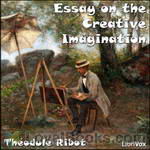 Essay on the Creative Imagination
Essay on the Creative Imagination
“It is quite generally recognized that psychology has remained in the semi-mythological, semi-scholastic period longer than most attempts at scientific formulization. For a long time it has been the “spook science” per se, and the imagination, now analyzed by M. Ribot in such a masterly manner, has been one of the most persistent, apparently real, though very indefinite, of psychological spooks. Whereas people have been accustomed to speak of the imagination as an entity sui generis, as a... | |
By: Theophilus Goldridge Pinches (1856-1934) | |
|---|---|
 The Religion of Babylonia and Assyria
The Religion of Babylonia and Assyria
| |
By: Thomas a Kempis (1380?-1471) | |
|---|---|
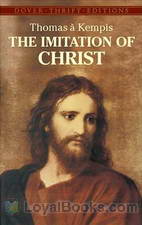 The Imitation of Christ
The Imitation of Christ
The Imitation of Christ is widely considered one of the greatest manuals of devotion in Christianity. The life of Christ is presented as the highest study possible to a mortal, as Jesus’ teachings far excel all the teachings of the saints. The book gives counsel to read the scriptures, statements about the uses of adversity, advice for submission to authority, warnings against temptation and how to resist it, reflections about death and the judgment, meditations upon the oblation of Christ, and admonitions to flee the vanities of the world. A recording of a Dutch translation of this work is also available (Thomas a Kempis was Dutch but wrote in Latin of course). | |
By: Thomas Betson | |
|---|---|
 A Ryght Profytable Treatyse Compendiously Drawen Out Of Many and Dyvers Wrytynges Of Holy Men
A Ryght Profytable Treatyse Compendiously Drawen Out Of Many and Dyvers Wrytynges Of Holy Men
| |
By: Thomas Boston (1676-1732) | |
|---|---|
 Crook in the Lot; or, The Sovereignty and Wisdom of God, in the Afflictions of Men, Displayed
Crook in the Lot; or, The Sovereignty and Wisdom of God, in the Afflictions of Men, Displayed
A meditation on Ecclesiastes 7:3, "Consider the work of God: for who can make that straight which he hath made crooked?," The Crook in the Lot considers the purposes of God for suffering and affliction in the life of the Christian. -Summary by Chris Bunn | |
 Paraphrase Upon the Epistle of Paul to the Galatians
Paraphrase Upon the Epistle of Paul to the Galatians
The "Paraphrase on the Epistle to the Galatians" was written in his younger years, while he was minister of Simprin, for his own improvement, and not with any design of printing it; though, it is hoped, the publication of it now may be for the edification of the church of Christ. - Summary adapted from Advertisement | |
By: Thomas Browne | |
|---|---|
 Religio Medici and Hydriotaphia
Religio Medici and Hydriotaphia
Religio Medici (The Religion of a Doctor) sets out Sir Thomas Browne's spiritual testament as well as being an early psychological self-portrait. In its day, the book was a European best-seller. It was published in 1643 by the newly-qualified physician, and its unorthodox views placed it swiftly upon the Papal Index Librorum Prohibitorum in 1645. Although predominantly concerned with Christian faith, the Religio also meanders into digressions upon alchemy, hermetic philosophy, astrology, and physiognomy... | |
By: Thomas Bulfinch (1796-1867) | |
|---|---|
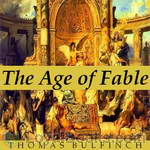 Bulfinch's Mythology: The Age of Fable
Bulfinch's Mythology: The Age of Fable
Bulfinch’s Mythology, first published in 1855, is one of the most popular collections of mythology of all time. It consists of three volumes: The Age of Fable, The Age of Chivalry, and Legends of Charlemagne. This is a recording of the tenth edition of the first volume, The Age of Fable. It contains many Greek and Roman myths, including simplified versions of The Iliad and The Odyssey, as well as a selection of Norse and “eastern” myths. Thomas Bulfinch’s goal was to make the ancient myths accessible to a wide audience, and so it is suitable for children. | |
 Bulfinch's Mythology: the Age of Fable
Bulfinch's Mythology: the Age of Fable
| |
 Bulfinch's Mythology
Bulfinch's Mythology
| |
By: Thomas Carlyle (1795-1881) | |
|---|---|
 The Life of Friedrich Schiller Comprehending an Examination of His Works
The Life of Friedrich Schiller Comprehending an Examination of His Works
| |
By: Thomas Chalmers (1780-1847) | |
|---|---|
 Lectures on Butler's Analogy
Lectures on Butler's Analogy
Thomas Chalmers had read, when a young man, several infidel productions. Their semblance of logic and learning, and supercilious confidence of style, disposed him to regard all religion as mere superstition. His mind was poisoned. Accustomed as he had been to the positive and precise reasonings of mathematics, he could not find similar proofs for Christianity. But he was induced, by some friends, to study Butler’s Analogy. This, as he expresses it, took Christianity “out of the class of unlikelihoods... | |
 Discourses on the Christian Revelation Viewed in Connection with the Modern Astronomy
Discourses on the Christian Revelation Viewed in Connection with the Modern Astronomy
The astronomical objection against the truth of the Gospel, does not occupy a very prominent place in any of our Treatises of Infidelity. It is often, however, met with in conversation — and we have known it to be the cause of serious perplexity and alarm in minds anxious for the solid establishment of their religious faith. There is an imposing splendour in the science of Astronomy; and it is not to be wondered at, if the light it throws, or appears to throw, over other tracks of speculation than those which are properly its own, should at times dazzle and mislead an inquirer... | |
By: Thomas Champness (1832-1905) | |
|---|---|
 Broken Bread from an Evangelist's Wallet
Broken Bread from an Evangelist's Wallet
| |
By: Thomas Cooper (1805-1892) | |
|---|---|
 The Bridge of History Over the Gulf of Time: A Popular View of the Historical Evidence for the Truth of Christianity
The Bridge of History Over the Gulf of Time: A Popular View of the Historical Evidence for the Truth of Christianity
Written by the former skeptic, poet, and scholar, Thomas Cooper, The Bridge of History Over the Gulf of Time admirably sets forth a winsome defense of Christianity. Written as the substance of fourteen years of lectures, at the request of his hearers, Cooper leads his reader across the bridge of history, through the centuries, tracing Christianity. At last, he addresses "Leben Jesu" by Dr. David Friedrich Strauss, discusses the historicity of the four Gospels, and offers some concluding evidences for the truth of Christianity. (Introduction by tzieger) | |
By: Thomas De Witt Talmage (1832-1902) | |
|---|---|
 Abominations of Modern Society
Abominations of Modern Society
| |
 Old Wells Dug Out
Old Wells Dug Out
Thomas DeWitt Talmage was born in Bound Brook, New Jersey. He earned an undergraduates degree at the University of the city of New York, now known as New York University. After his graduation he studied law, but ultimately decided on the ministry. He pastored a church in Philadelphia and spoke in many other places including England and New York. This book contains 33 of his sermons all of them well worth a read or listen! They are full of encouragement and thought provoking comments. | |
 Twenty-five Sermons on The Holy Land
Twenty-five Sermons on The Holy Land
When Rev. T. DeWitt Talmage went to visit the Holy Land, he wrote sermons for his home church and sent them back to be read. It resulted in this wonderful collection of sermons exploring in depth the places he visited, explaining their significance both in the past and present, describing what he saw and how he felt. As well as what happened there in biblical times, all the while expanding on that and teaching valuable lessons about Christ and how he is just as real today as he was when he walked the Earth in physical form... | |
By: Thomas Erskine (1788-1870) | |
|---|---|
 Unconditional Freeness of the Gospel
Unconditional Freeness of the Gospel
This is a work of theology which addresses a seeming contradiction in Christian thought: that love and forgiveness are freely offered to all, but they cannot be accepted without a major change in the receiver's heart. Along the way, the author explains what he believes justification to be--not a judicial act of God, but rather a description of the state of the believer. He also goes into detail on why our pride makes it difficult to accept God's love. -Summary by Devorah Allen | |
By: Thomas G. Crippen (1841-1930) | |
|---|---|
 Christmas and Christmas Lore
Christmas and Christmas Lore
For above forty years I have been a diligent collector of history, tradition, legend, custom, or folklore, whether from familiar or unfamiliar sources, relating to the festival of the Holy Nativity. Moreover, I have gathered copiously from scarce pamphlets of the 17th and 18th centuries, from old chapbooks, newspaper paragraphs, and magazine articles old and new, and from contact with rustics in several counties. The fruits of my gathering are briefly summarized in the following pages, in the hope that they may conduce to that "joy and pious mirth" wherewith we ought, all of us, to commemorate the best and greatest Gift of God to man. - Summary by from the Preface | |
By: Thomas Goodwin (1600-1680) | |
|---|---|
 Man's Restoration by Grace
Man's Restoration by Grace
A discourse of the several parts which the three persons of the Godhead bear in the accomplishment of our salvation, and that they have taken on them several works appropriate to them therein.—And the distribution of our salvation into three parts, according to the number of the three persons, and the part which each of them have taken therein, viz., the Father in election, the Son in redemption and justification, the Holy Ghost in sanctification and application. - Summary by Preface | |
By: Thomas Guthrie (1803-1873) | |
|---|---|
 Plea for Ragged Schools; or, Prevention Better than Cure
Plea for Ragged Schools; or, Prevention Better than Cure
The Reverend Thomas Guthrie was first introduced to the idea of ragged schools in 1841, while acting as the Parish Minister of St. John's Church in Edinburgh. On a visit to Portsmouth, he saw a picture of John Pounds and felt inspired and humbled by the crippled cobbler's work. Pounds had been injured in a shipbuilding accident at the age of 15. He later became a shoemaker and, in 1818, he began teaching poor children without charging fees. He actively recruited children and young people to his school, spending time on the streets and quays making contact and even bribing them to come with the offer of baked potatoes... | |
By: Thomas H. Burgoyne (1855-1894) | |
|---|---|
 The Light of Egypt, vol II
The Light of Egypt, vol II
"The Light of Egypt" will be found to be an Occult library in itself, a textbook of esoteric knowledge, setting forth the "wisdom Religion" of life, as taught by the Adepts of Hermetic Philosophy. It will richly repay all who are seeking the higher life to carefully study this book, as it contains in a nutshell the wisdom of the ages regarding man and his destiny, here and hereafter. The London and American first edition, also the French edition, Vol. I, met with lively criticism from Blavatsky Theosophists, because it annihilates that agreeable delusion of "Karma" and "Reincarnation" from the minds of all lovers of truth for truth's sake. | |
By: Thomas Henry Howard (1849-1923) | |
|---|---|
 Standards of Life and Service
Standards of Life and Service
| |
By: Thomas Henry Huxley (1825-1895) | |
|---|---|
 Lectures and Essays
Lectures and Essays
| |
By: Thomas Heyden (1798-1870) | |
|---|---|
 A Memoir on the Life and Character of the Rev. Prince Demetrius A. de Gallitzin
A Memoir on the Life and Character of the Rev. Prince Demetrius A. de Gallitzin
Prince Demetrius of Gallitzin (1770-1840), or "Father Smith," as he was known on the eighteenth century American frontier, was one of the glories of early Catholicism in America. Though a prince by birth, Demetrius discreetly concealed the glory of his earlier life that he might better lead his adopted spiritual children to the glory of eternal life. For more than four decades, he humbly provided for the spiritual needs of courageous pioneers scattered throughout the Allegheny Mountains of central Pennsylvania... | |